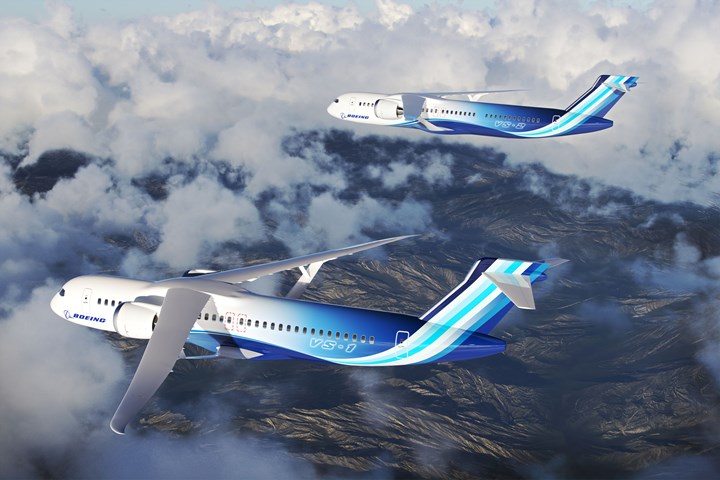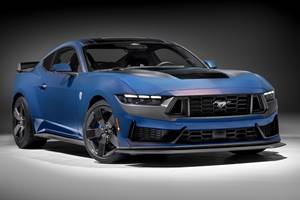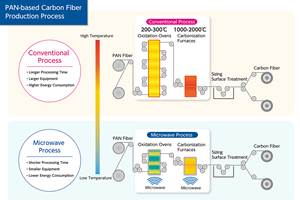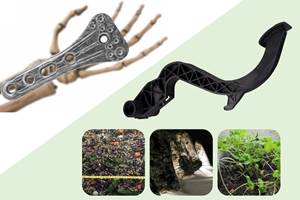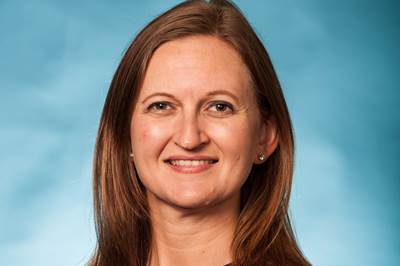NASA picks Boeing’s Transonic Truss-Based Wing for Sustainable Flight Demonstrator project
With the help of NASA, Boeing will build, test and fly a full-scale demonstrator aircraft starting in 2028, gearing toward a greener, more fuel-efficient future aircraft.
Artist concept of commercial aircraft families with a Transonic Truss-Braced Wing (TTBW) configuration from the Sustainable Flight Demonstrator (SFD) project. Photo Credit: Boeing
The National Aeronautics and Space Administration (NASA, Washington, D.C., U.S.) has issued an award to The Boeing Company (Arlington, Va., U.S.) for the agency’s Sustainable Flight Demonstrator (SFD) project, which seeks to inform a potential new generation of single-aisle airliners with up to 30% lower emissions versus today’s most advanced commercial aircraft. Boeing will work with NASA to build, test and fly a full-scale demonstrator aircraft based on Boeing’s Transonic Truss-Braced Wing (TTBW) design. First flight is scheduled for 2028, part of a year-long flight test campaign planned at NASA Armstrong Flight Research Center in California.
Over seven years, NASA will invest $425 million — as well as contribute technical expertise and test facilities — while Boeing and its partners will contribute an estimated $725 million.
“It’s our goal that NASA’s partnership with Boeing to produce and test a full-scale demonstrator will help lead to future commercial airliners that are more fuel efficient, with benefits to the environment, the commercial aviation industry and to passengers worldwide,” NASA administrator Bill Nelson says. “If we are successful, we may see these technologies in planes that the public takes to the skies in the 2030s.”
No surprise, TTBW vision
As reported by Aviation Week, this award is not a surprise. “NASA and Boeing have been working together on the high aspect-ratio TTBW configuration for more than a decade,” AvWeek editor Graham Warwick notes. He quotes Nelson as saying that selection of the SFD was indeed a competition, but Boeing’s proposal “was by far the best.”
Warwick explains that Boeing’s proposal outlined a possible family of single-aisle TTBW aircraft, including the VS-1 and VS-2 where VS stands for Vision System. “Based on the MD-90 fuselage, the smaller VS-1 seats 130-160 passengers while the 180-210-seat VS-2 has a bigger wing and engines,” notes Warwick. The X-plane demonstrator for NASA will reportedly use a shortened MD-90 airframe.
CW featured the TTBW in its 2022 article, “The next 10 years in commercial aviation and composites.” The concept features an aircraft with extra-long, thin wings stabilized by diagonal struts. This design results in an aircraft that is much more fuel efficient than a traditional airliner due to a shape that would create less drag — resulting in it burning less fuel.
In line with TTBW development NASA announced a call to industry in July 2022 to capitalize on next-gen flight technologies to decarbonize aviation.
Warwick notes the goal of the SFD program is to validate the benefits of the TTBW at the aircraft level. And whether Boeing will use the configuration in a future single-aisle platform depends on the success of the project. He quotes Mike Sinnet, VP and general manager for product development at Boeing Commercial Airplanes in observing that the scale of the industry investment, combined with the $110 million Boeing has already spent on TTBW development, indicates Boeing is “optimistic” about the design.
Single-aisle as vector toward net-zero aviation
According to NASA’s press announcement, single-aisle aircraft are the workhorse of many airline fleets, and due to their heavy use, account for nearly half of worldwide aviation emissions. NASA plans to complete testing for the project by the late 2020s, so that technologies and designs demonstrated by the project can inform industry decisions about the next generation of single-aisle aircraft that could enter service in the 2030s.
“NASA is working toward an ambitious goal of developing game-changing technologies to reduce aviation energy use and emissions over the coming decades toward an aviation community goal of net-zero carbon emissions by 2050,” Bob Pearce, NASA associate administrator for the Aeronautics Research Mission Directorate, says. “The Transonic Truss-Braced Wing is the kind of transformative concept and investment we will need to meet those challenges and, critically, the technologies demonstrated in this project have a clear and viable path to informing the next generation of single-aisle aircraft, benefiting everyone that uses the air transportation system.”
NASA’s goal is that the technology flown on the demonstrator aircraft, when combined with other advancements in propulsion systems, materials and systems architecture, would result in fuel consumption and emissions reductions of up to 30% relative to today’s most efficient single-aisle aircraft, depending on the mission.
“We’re honored to continue our partnership with NASA and to demonstrate technology that significantly improves aerodynamic efficiency resulting in substantially lower fuel burn and emissions,” said Todd Citron, Boeing chief technology officer. “Boeing has been advancing a multi-pronged sustainability strategy, including fleet renewal, operational efficiency, renewable energy and advanced technologies to support the U.S. Aviation Climate Action Plan and meet the industry objective of net-zero carbon emissions by 2050. The Sustainable Flight Demonstrator builds on more than a decade of NASA, Boeing, and our industry partners’ investments to help achieve these objectives.”
SFD as part of Funded Space Act
The SFD is the largest effort under NASA’s Sustainable Flight National Partnership. Other component programs focus on hybrid turbofan engines, sustainable fuels, electrified powertrains, high-rate composites manufacturing and trajectory-optimized operations.
The new Funded Space Act agreement enables NASA to capitalize on private industry knowledge and experience, with Boeing and its partners laying out a proposed technical plan. NASA will provide access to its aeronautics facilities and expertise. NASA will not procure an aircraft or any other hardware for its missions. The agency will obtain access to certain ground and flight data that can be used to validate the airframe configuration and associated technologies.
The Sustainable Flight Demonstrator will help the United States achieve net-zero carbon emissions from aviation by 2050 — one of the environmental goals articulated in the White House’s U.S. Aviation Climate Action Plan. The International Civil Aviation Organization also has set a goal of net-zero carbon emissions by 2050.
The project is an activity under NASA’s Integrated Aviation Systems Program and a key element of the Sustainable Flight National Partnership, which focuses on developing new sustainable aviation technologies.
Learn more about NASA’s Sustainable Aviation efforts at: go.nasa.gov/3GzcDMP
Related Content
JEC World 2023 highlights: Innovative prepregs, bio-resins, automation, business development
CW’s Jeff Sloan checks in with JEC innovations from Solvay, A&P, Nikkiso, Voith, Hexcel, KraussMaffei, FILL, Web Industries, Sicomin, Bakelite Synthetics, Westlake Epoxy and Reliance Industries.
Read MoreFord Mustang Dark Horse features Carbon Revolution carbon fiber wheels
The 19-inch, five-spoke Dark Horse wheels feature signature blue carbon fiber detailing, keeping with the blue accents throughout the vehicle’s interior and exterior.
Read MoreMicrowave heating for more sustainable carbon fiber
Skeptics say it won’t work — Osaka-based Microwave Chemical Co. says it already has — and continues to advance its simulation-based technology to slash energy use and emissions in manufacturing.
Read MoreBioabsorbable and degradable glass fibers, compostable composite parts
ABM Composite offers sustainable options and up to a 60% reduction in carbon footprint for glass fiber-reinforced composites.
Read MoreRead Next
NASA's Advanced Air Mobility National Campaign adds new partners
Partners like Overair and Supernal boast composites exploration, expertise in eVTOL developments, joining 30 others taking part in the program’s integrated AAM information exchange efforts.
Read MoreEpisode 40: Sarah Cox, NASA
Sarah Cox, materials engineer at NASA, talks about her experience at NASA working with composites in the space travel space.
Read MoreCW’s 2024 Top Shops survey offers new approach to benchmarking
Respondents that complete the survey by April 30, 2024, have the chance to be recognized as an honoree.
Read More




